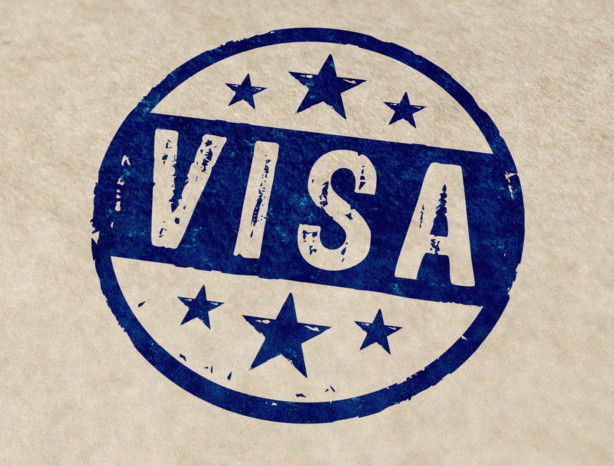America
Visa bulletin, September, 2021

FAMILY-SPONSORED PREFERENCES
First: (F1) Unmarried Sons and Daughters of U.S. Citizens: 23,400 plus any numbers not required for fourth preference.
Second: Spouses and Children, and Unmarried Sons and Daughters of Permanent Residents: 114,200, plus the number (if any) by which the worldwide family preference level exceeds 226,000, plus any unused first preference numbers:
A. (F2A) Spouses and Children of Permanent Residents: 77% of the overall second preference limitation, of which 75% are exempt from the per-country limit;
B. (F2B) Unmarried Sons and Daughters (21 years of age or older) of Permanent Residents: 23% of the overall second preference limitation.
Third: (F3) Married Sons and Daughters of U.S. Citizens: 23,400, plus any numbers not required by first and second preferences.
Fourth: (F4) Brothers and Sisters of Adult U.S. Citizens: 65,000, plus any numbers not required by first three preferences.
A. FINAL ACTION DATES FOR FAMILY-SPONSORED PREFERENCE CASES
On the chart below, the listing of a date for any class indicates that the class is oversubscribed (see paragraph 1); "C" means current, i.e., numbers are authorized for issuance to all qualified applicants; and "U" means unauthorized, i.e., numbers are not authorized for issuance. (NOTE: Numbers are authorized for issuance only for applicants whose priority date is earlier than the final action date listed below.)
| Family- Sponsored | All Chargeability Areas Except Those Listed | CHINA-mainland born | INDIA | MEXICO | PHILIPPINES |
| F1 | 01DEC14 | 01DEC14 | 01DEC14 | 15JAN99 | 01MAR12 |
| F2A | C | C | C | C | C |
| F2B | 22SEP15 | 22SEP15 | 22SEP15 | 15MAR00 | 22OCT11 |
| F3 | 22NOV08 | 22NOV08 | 22NOV08 | 15MAY97 | 08JUN02 |
| F4 | 22MAR07 | 22MAR07 | 15SEP05 | 08FEB99 | 22AUG02 |
| 22MAR05 |
| 22MAR05 |
| 22DEC10 |
| 01FEB16 |
| 01FEB16 |
B. DATES FOR FILING FAMILY-SPONSORED VISA APPLICATIONS
The chart below reflects dates for filing visa applications within a timeframe justifying immediate action in the application process. Applicants for immigrant visas who have a priority date earlier than the application date in the chart below may assemble and submit required documents to the Department of State’s National Visa Center, following receipt of notification from the National Visa Center containing detailed instructions. The application date for an oversubscribed category is the priority date of the first applicant who cannot submit documentation to the National Visa Center for an immigrant visa. If a category is designated “current,†all applicants in the relevant category may file applications, regardless of priority date.
The “C†listing indicates that the category is current, and that applications may be filed regardless of the applicant’s priority date. The listing of a date for any category indicates that only applicants with a priority date which is earlier than the listed date may file their application.
Visit www.uscis.gov/visabulletininfo for information on whether USCIS has determined that this chart can be used (in lieu of the chart in paragraph 4.A.) this month for filing applications for adjustment of status with USCIS.
| Family- Sponsored | All Chargeability Areas Except Those Listed | CHINA- mainland born | INDIA | MEXICO | PHILIPPINES |
| F1 | 15MAY16 | 15MAY16 | 15MAY16 | 01AUG00 | 22APR15 |
| F2A | 01JUN21 | 01JUN21 | 01JUN21 | 01JUN21 | 01JUN21 |
| F2B | 22SEP16 | 22SEP16 | 22SEP16 | 01OCT00 | 01OCT13 |
| F3 | 22AUG09 | 22AUG09 | 22AUG09 | 08SEP00 | 01OCT03 |
| F4 | 01OCT07 | 01OCT07 | 01JAN06 | 01JUN99 | 01FEB04 |
5. Section 203(b) of the INA prescribes preference classes for allotment of Employment-based immigrant visas as follows:
EMPLOYMENT-BASED PREFERENCES
First: Priority Workers: 28.6% of the worldwide employment-based preference level, plus any numbers not required for fourth and fifth preferences.
Second: Members of the Professions Holding Advanced Degrees or Persons of Exceptional Ability: 28.6% of the worldwide employment-based preference level, plus any numbers not required by first preference.
Third: Skilled Workers, Professionals, and Other Workers: 28.6% of the worldwide level, plus any numbers not required by first and second preferences, of which not more than 10,000 may be provided to "*Other Workers".
Fourth: Certain Special Immigrants: 7.1% of the worldwide level.
Fifth: Employment Creation: 7.1% of the worldwide level, not less than 3,000 of which are reserved for investors in a targeted rural or high-unemployment area, and 3,000 are set aside for investors in regional centers by Sec. 610 of Pub. L. 102-395.
A. FINAL ACTION DATES FOR EMPLOYMENT-BASED PREFERENCE CASES
On the chart below, the listing of a date for any class indicates that the class is oversubscribed (see paragraph 1); "C" means current, i.e., numbers are authorized for issuance to all qualified applicants; and "U" means unauthorized, i.e., numbers are not authorized for issuance. (NOTE: Numbers are authorized for issuance only for applicants whose priority date is earlier than the final action date listed below.)
| Employment- based | All Chargeability Areas Except Those Listed | CHINA- mainland born | EL SALVADOR GUATEMALA HONDURAS | INDIA | MEXICO | PHILIPPINES | VIETNAM |
| 1st | C | C | C | C | C | C | C |
| 2nd | C | 01JUL18 | C | 01SEP11 | C | C | C |
| 3rd | C | 08JAN19 | C | 01JAN14 | C | C | C |
| Other Workers | C | 01FEB10 | C | 01JAN14 | C | C | C |
| 4th | C | C | 15MAR19 | C | 01MAR20 | C | C |
| Certain Religious Workers | C | C | 15MAR19 | C | 01MAR20 | C | C |
| 5th Non-Regional Center (C5 and T5) | C | 22NOV15 | C | C | C | C | C |
| 5th Regional Center (I5 and R5) | U | U | U | U | U | U | U |
*Employment Third Preference Other Workers Category: Section 203(e) of the Nicaraguan and Central American Relief Act (NACARA) passed by Congress in November 1997, as amended by Section 1(e) of Pub. L. 105-139, provides that once the Employment Third Preference Other Worker (EW) cut-off date has reached the priority date of the latest EW petition approved prior to November 19, 1997, the 10,000 EW numbers available for a fiscal year are to be reduced by up to 5,000 annually beginning in the following fiscal year. This reduction is to be made for as long as necessary to offset adjustments under the NACARA program. Since the EW final action date reached November 19, 1997 during Fiscal Year 2001, the reduction in the EW annual limit to 5,000 began in Fiscal Year 2002. For Fiscal Year 2021 this reduction will be limited to approximately 150.
DETERMINATION OF THE NUMERICAL LIMITS ON IMMIGRANTS REQUIRED UNDER THE TERMS OF THE IMMIGRATION AND NATIONALITY ACT (INA)
The State Department is required to make the determination of the worldwide numerical limitations, as outlined in Section 201(c) and (d) of the INA, on an annual basis. These calculations are based in part on data provided by U.S. Citizen and Immigration Services (USCIS) regarding the number of immediate relative adjustments in the preceding year and the number of aliens paroled into the United States under Section 212(d)(5) in the second preceding year. Without this information, it is impossible to make an official determination of the annual limits. To avoid delays in processing while waiting for the USCIS data, the Visa Office (VO) bases allocations on reasonable estimates of the anticipated amount of visa numbers to be available under the annual limits, in accordance with Section 203(g) of the INA. On July 7th, USCIS provided the required data to the VO.
The Department of State has determined the Family and Employment preference numerical limits for FY-2021 in accordance with the terms of Section 201 of the INA. These numerical limitations for FY-2021 are as follows:
Worldwide Family-Sponsored preference limit: 226,000
Worldwide Employment-Based preference limit: 262,288
Under INA Section 202(a), the per-country limit is fixed at 7% of the family and employment annual limits. For FY-2021 the per-country limit is 34,180. The dependent area annual limit is 2%, or 9,766.



































